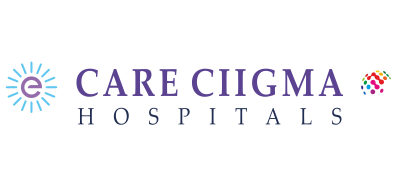Leukemia
Leukemia is a cancer that starts in blood stem cells. Stem cells are basic cells that develop into different types of cells that have different jobs.

Leukemia develops when blood stem cells in the bone marrow change and no longer grow or behave normally. These abnormal cells are called leukemia cells. Over time, the leukemia cells crowd out normal blood cells so that they can’t do their jobs. There are many different types of leukemia. They are grouped based on the type of blood stem cell they developed from. Lymphocytic leukemias (also known as lymphoblastic leukemias) develop from abnormal lymphoid stem cells. Myelogenous leukemias develop from abnormal myeloid stem cells.
Blood stem cells develop into either lymphoid stem cells or myeloid stem cells.
- Lymphoid stem cells : develop into lymphocytes, a type of white blood cell. Lymphocytes make antibodies to help fight infection.
- Myeloid stem cells : develop into red blood cells, granulocytes, monocytes or platelets. Red blood cells carry oxygen to all tissues of the body.
- Granulocytes and monocytes are types of white blood cells that destroy bacteria and help fight infection. Platelets form clots in damaged blood vessels to stop bleeding.
The types of leukemiaare further grouped based on how quickly the leukemia develops and grows. Acute leukemias start suddenly, developing within days or weeks. Chronic leukemias develop slowly over months or years. The 4 main types of leukemia are:
- Acute Lymphocytic Leukemia (ALL)
- Acute Myelogenous Leukemia (AML)
- Chronic Lymphocytic Leukemia (CLL)
- Chronic Myelogenous Leukemia (CML)
In adults, CLL and AML are the most common leukemias. There are many different subtypes of leukemia
A sign is something that can be observed and recognized by a doctor or healthcare professional (for example, a rash). A symptom is something that only the person experiencing it can feel and know (for example, pain or tiredness). The signs and symptoms of leukemia can also be caused by other health conditions. It is important to have any unusual symptoms checked by a doctor.
Signs and Symptoms of Acute Leukemia (fast growing) may be similar to the flu and come on suddenly within days or weeks.
In the early stages of Chronic Leukemia (slow growing), many people have few or no symptoms. Signs and symptoms usually develop gradually and people will complain that they just do not feel well. The disease is often discovered during a routine blood test.
Signs and Symptoms of Leukemia are:
- Fatigue
- Malaise
- Loss of appetite
- Weight loss
- Fever
- Anemia
- Shortness of breath
- Paleness
- Palpitations (rapid heartbeat)
- Weakness
- Dizziness
- Bleeding
- Widespread bruising
- Frequent or severe nose bleeds
- Bleeding gums
- Mid-cycle or heavy menstrual flow
- Red spots on the skin (petechiae)
- Frequent infections
- Lungs (pneumonia)
- Urinary tract
- Gums
- Around the anus
- Cold sores
- Vomiting
- Headache
- Sore throat
- Night sweats
- Bone or joint pain
- Enlarged lymph nodes in the neck, underarm, groin or above the collarbone
- Abdominal discomfort or feeling of fullness
- Vision problems
- Sores in the eyes
- Swelling of the testicles
Treatment for leukemia is given by cancer specialists (oncologists). Some specialize in surgery, some in radiation therapy and others in chemotherapy (drugs). These doctors work with the person with cancer to decide on a treatment plan
Treatment plans are designed to meet the unique needs of each person with cancer. Treatment decisions for leukemia are based on:
- The type of leukemia
- The person’s age
- Chromosomal (genetic) abnormalities
- The person’s overall health
- Chemotherapy
- Main treatment for many kinds of leukemia
- Stem cell transplant
- An option for some people under the age of 55 years
- Radiation therapy
- Most often used to treat or prevent spread to the central nervous system and to prepare for stem cell transplant
- Targeted therapy for those with the Philadelphia (Ph) chromosome
- Supportive therapy to manage complications of treatment
- Follow-up after treatment is finished
Treatment by Type:
- Acute Lymphocytic Leukemia (ALL)
- Acute Myelogenous Leukemia (AML)
- Chronic Lymphocytic Leukemia (CLL)
- Chronic Myelogenous Leukemia (CML)

